Achanarras Quarry
Geological Conservation Review site | GCR #351 | Palaeontology | Silurian - Devonian Chordata
Geological Conservation Review site | GCR #351 | Palaeontology | Silurian - Devonian Chordata
Scotland's geosites are chosen because of their local, national or international importance. Take only photos, leave only footprints: avoid causing any damage to this site. You can walk almost anywhere in Scotland without the need to ask permission or keep to paths, but you have a responsibility to care for your own safety, to respect people's privacy and peace of mind and to cause no damage.
This site is a Site of Special Scientific Interest (SSSI). It is an offence to intentionally or recklessly damage the protected natural features of a SSSI, and this includes unauthorised sample collection.
The right of access does not extend to quarries, building sites or any land where public access is prohibited, or to the collection of geological samples.
Achnarras Quarry SSSI is a disused quarry famous for its fossil fish fauna. Fossil fish can still be found by turning over material and carefully splitting the flagstone spoil material. There is a shelter with information boards depicting illustrations of the fossils discovered at the site.
The rich and varied Middle Devonian fish fauna of Achanarras has been frequently described since 1889. Vertebrates are prolific, both in numbers of individuals and numbers of species. Sixteen species are known from Achanarras, representing fifteen genera, and at least ten orders. This is the most diverse species list known from any of the many equivalent Scottish Achanarras horizon exposures, which extend from the Melby Fish Bed in Shetland to the nodule beds of Moray and Nairn. Very different abundances of individuals within a species are found between sites, and all other sites have a limited number of species. Almost every vertebrate known from the Achanarras horizon can be found in Achanarras Quarry. It is the type locality for two species: Palaeospondylus gunni Traquair and Rhamphodopsis threiplandi Watson, plus the only locality for a Scaumetiella-like problematical fossil. A key vertebrate locality of national importance.
The site is signposted from the main A9 trunk road at Mybster. A short distance west signs indicate to turn up a gravel track where a small parking area is available by the site notice board. Achanarras Quarry is situated a further km up the track. Please ensure all gates are closed as found.
https://ehive.com/objects?query=achanarras&facet=object_typ…
Jack Saxon eHive online collection
http://www.caithness.org/caithnessfieldclub/bulletins/2006/…
Caithness Field Club Bulletin (2006) - A Geological Tour of the North by Jack Saxon
http://www.caithness.org/caithnessfieldclub/bulletins/1979/…
Caithness Field Club Bulletin (April 1979) - The Radioactive Fossil Fishes of the North of Scotland by J. Saxon
http://www.caithness.org/caithnessfieldclub/bulletins/1988/…
Caithness Field Club Bulletin (April 1988) - The Orcadian Middle Old Red Sandstone by Jack Saxon
http://www.caithness.org/caithnessfieldclub/bulletins/2001/…
Caithness Field Club Bulletin (2001) - A New Fossil Discovery At Achanarras Quarry by Jack Saxon
https://geosites.scottishgeologytrust.org/geosite_edit/768
Caithness Field Club Bulletin (2003) - Achanarras - A Window on the Glorious Devonian by Jack Saxon
http://www.caithness.org/caithnessfieldclub/bulletins/2004/…
Caithness Field Club Bulletin (2004) - A New Fossil Fish by Jack Saxon
https://www.nature.scot/enjoying-outdoors/visit-our-nature-…
Achanarras Quarry Nature Reserve
https://sitelink.nature.scot/site/13
Achanarras Quarry SSSI
http://geoscenic.bgs.ac.uk/asset-bank/action/viewAsset?id=1…
The fish Homosteus milleri Traquair, 1888 from the Middle Old Red Sandstone of Achanarras Quarry.
The site is at the top of a hill and exposed, although a shelter is provided on site offering protection from wind and rain. Parts of the quarry are flooded and the western edges of the spoil material are steep and loose.
There are no site highlights yet.
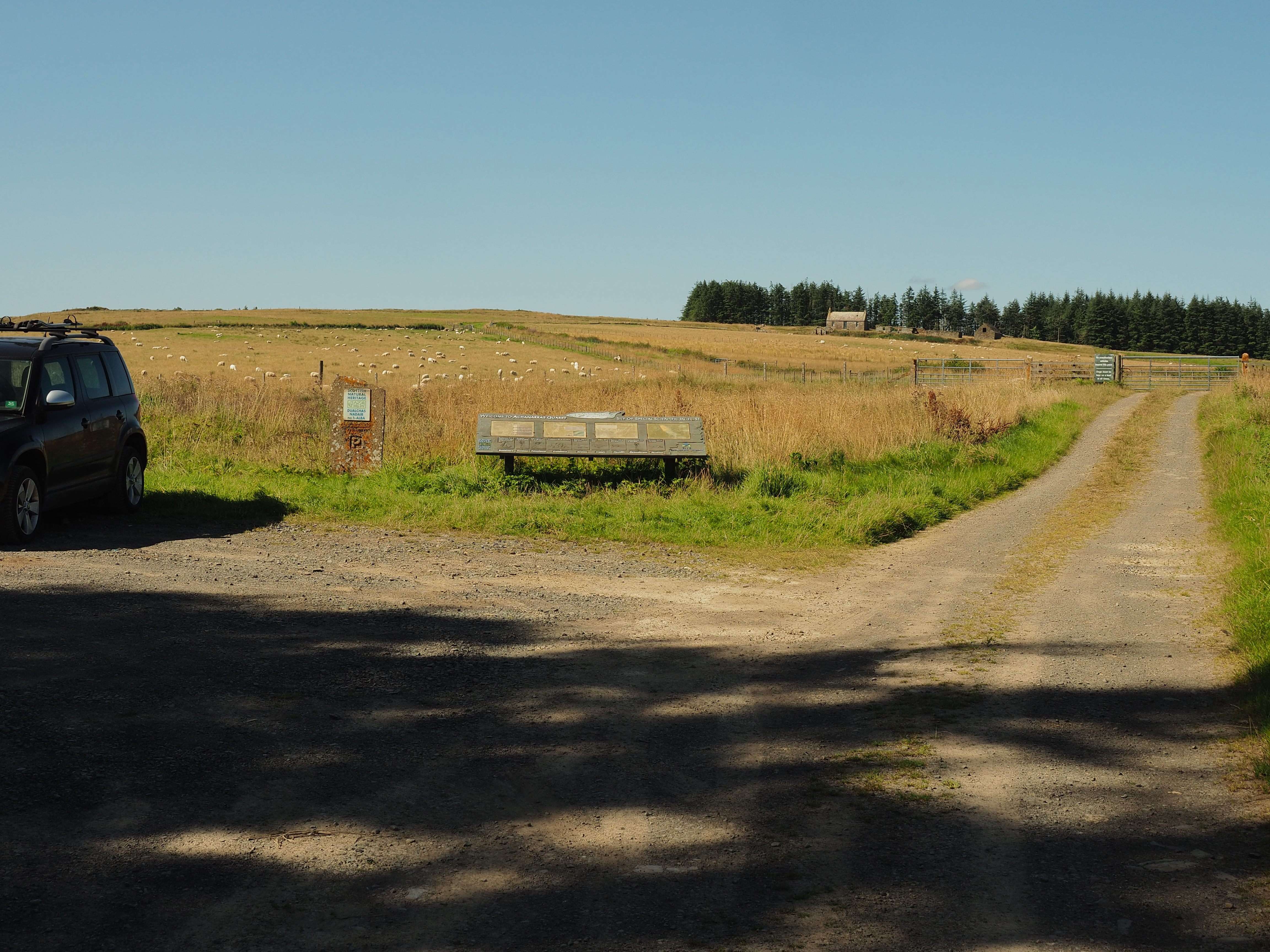
View of the parking area, information board and track leading Northwest up to the site which is just over the horizon the left of the forested area.
Gary Eisenhauer
Aug. 9, 2023
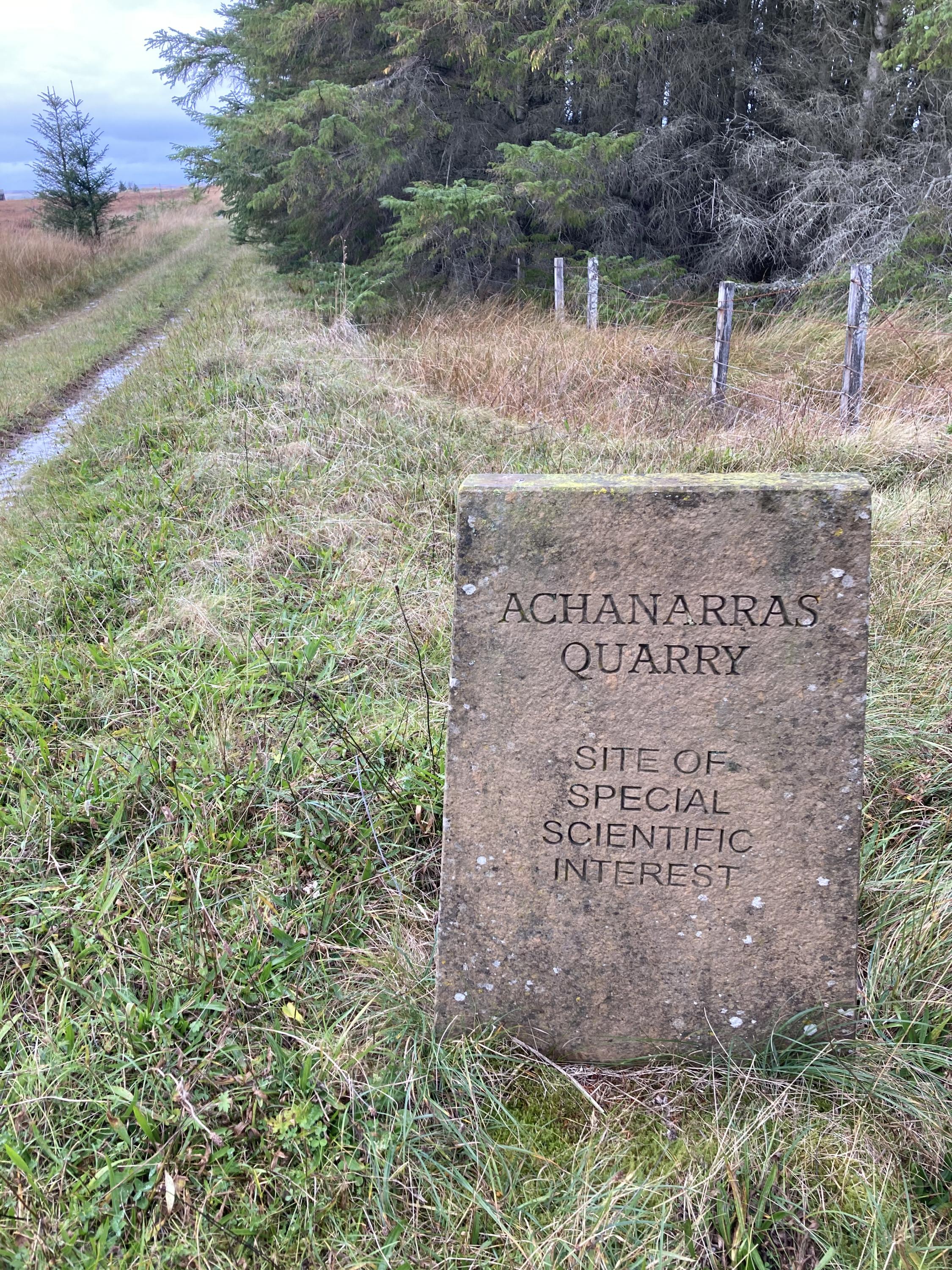
Sign marking the quarry as an SSSI.
Rowan Barnes
Oct. 8, 2025
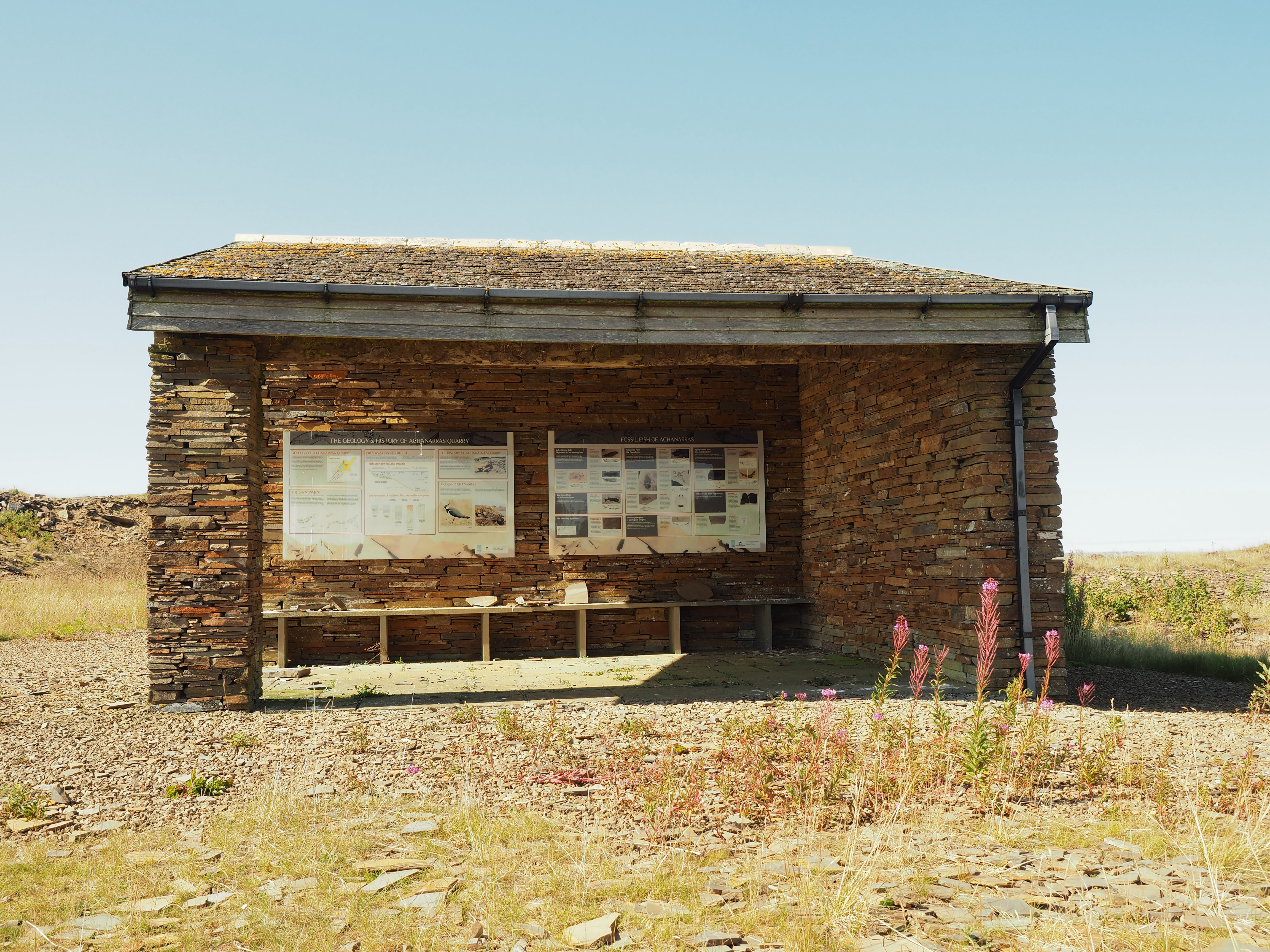
The onsite shelter with information boards and bench seating.
Gary Eisenhauer
Aug. 9, 2023
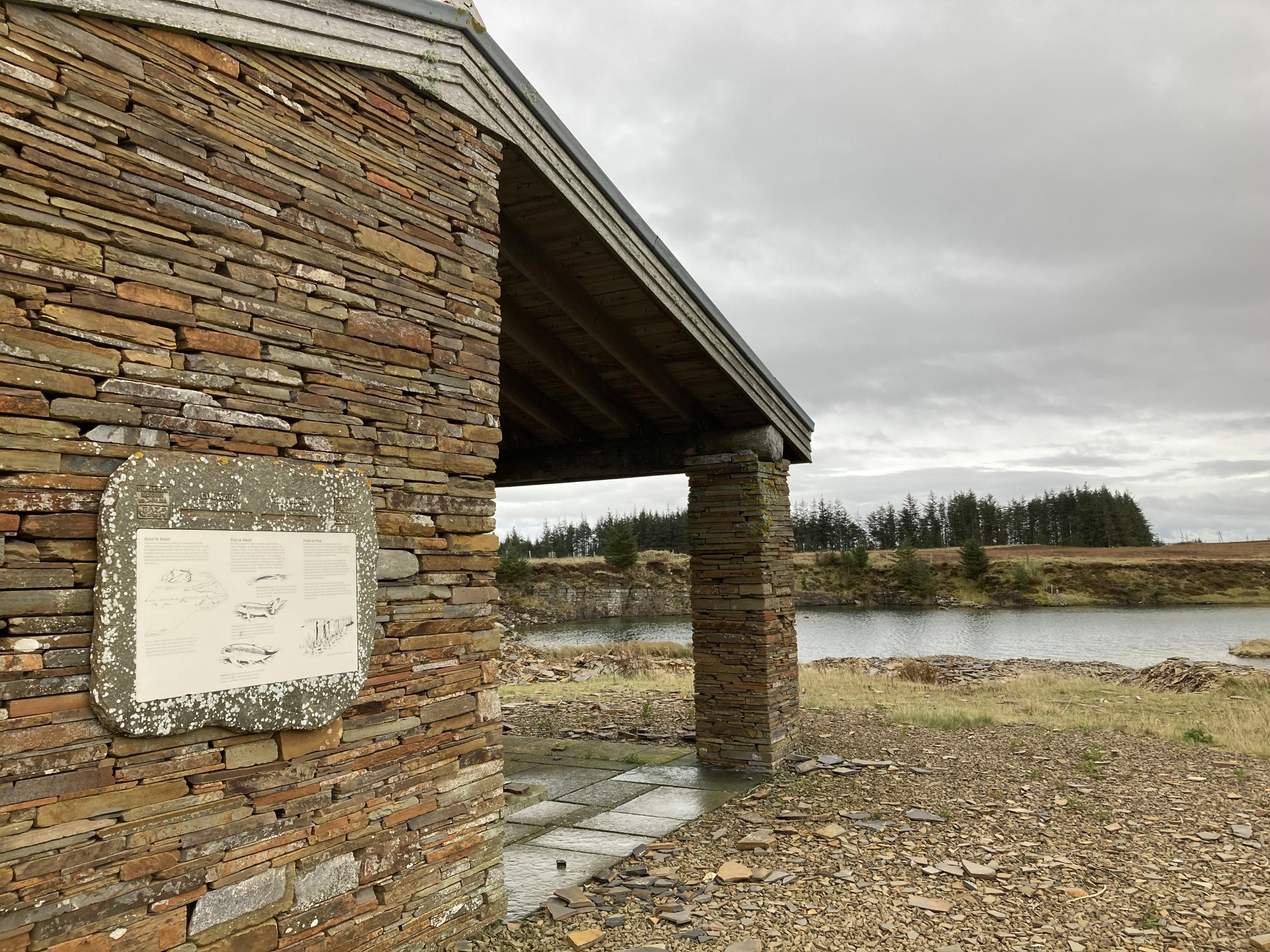
The other side of the on site shelter.
Rowan Barnes
Oct. 8, 2025

Close up of the stone mounted information on the side of the shelter.
Rowan Barnes
Oct. 8, 2025
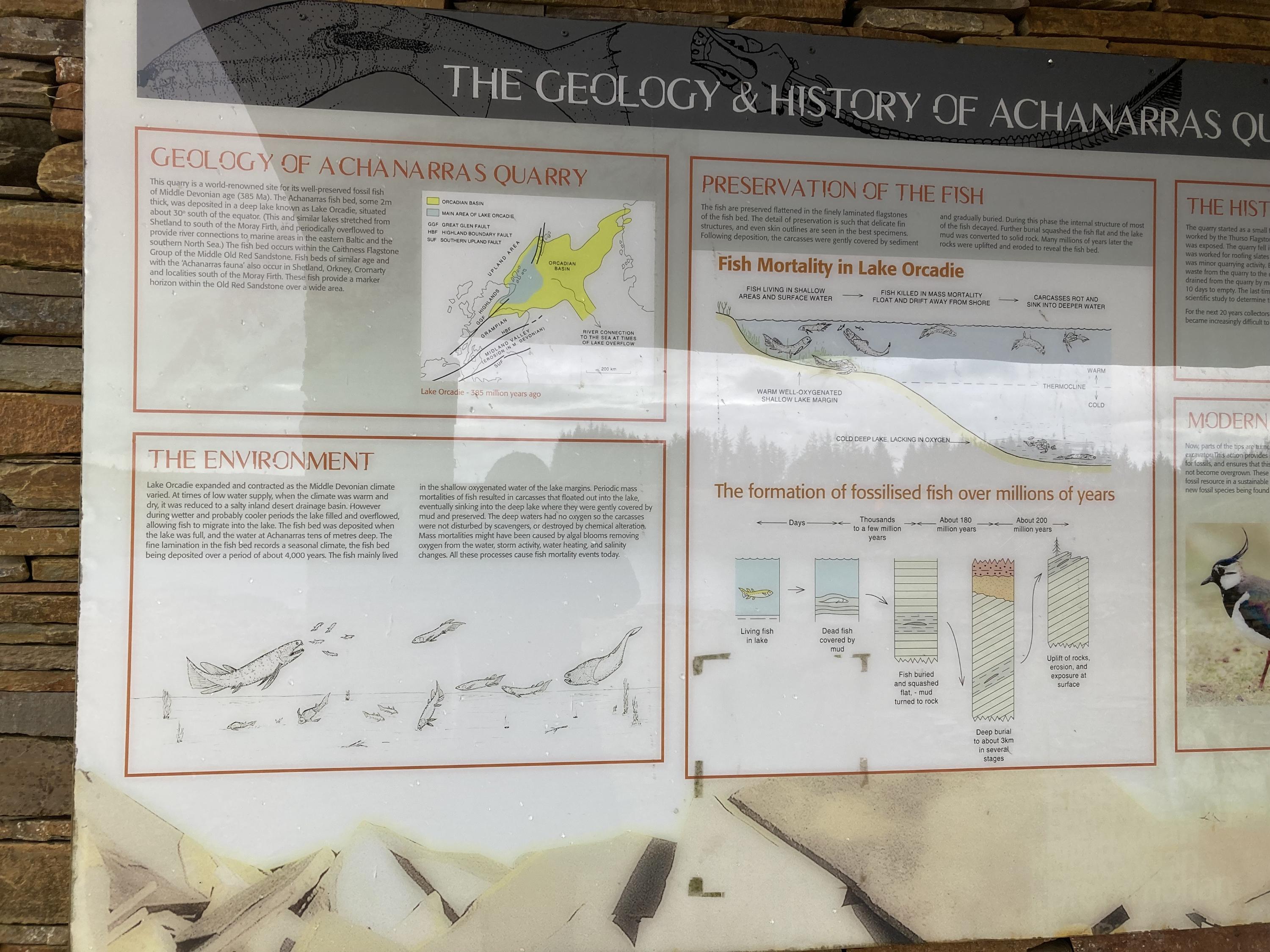
Information board at Achanarras Quarry.
THE GEOLOGY & HISTORY OF ACHANARRAS QUARRY.
GEOLOGY OF ACHANARRAS QUARRY
This quarry is a world-renowned site for its well-preserved fossil fish of Middle Devonian age (385 Ma). The Achanarras fish bed, some 2m thick, was deposited in a deep lake known as Lake Orcadie, situated about 30° south of the equator. (This and similar lakes stretched from Shetland to south of the Moray Firth, and periodically overflowed to provide river connections to marine areas in the eastern Baltic and the southern North Sea.) The fish bed occurs within the Caithness Flagstone Group of the Middle Old Red Sandstone. Fish beds of similar age and with the 'Achanarras fauna' also occur in Shetland, Orkney, Cromarty and localities south of the Moray Firth. These fish provide a marker horizon within the Old Red Sandstone over a wide area.
PRESERVATION OF THE FISH
The fish are preserved flattened in the finely laminated flagstones of the fish bed. The detail of preservation is such that delicate fin structures, and even skin outlines are seen in the best specimens.
Following deposition, the carcasses were gently covered by sediment and gradually buried. During this phase the internal structure of most of the fish decayed. Further burial squashed the fish flat and the lake mud was converted to solid rock. Many millions of years later the rocks were uplifted and eroded to reveal the fish bed.
THE ENVIRONMENT
Lake Orcadie expanded and contracted as the Middle Devonian climate varied. At times of low water supply, when the climate was warm and dry, it was reduced to a salty inland desert drainage basin. However during wetter and probably cooler periods the lake filled and overflowed, allowing fish to migrate into the lake. The fish bed was deposited when the lake was full, and the water at Achanarras tens of metres deep. The fine lamination in the fish bed records a seasonal climate, the fish bed being deposited over a period of about 4,000 years. The fish mainly lived in the shallow oxygenated water of the lake margins. Periodic mass mortalities of fish resulted in carcasses that floated out into the lake, eventually sinking into the deep lake where they were gently covered by mud and preserved. The deep waters had no oxygen so the carcasses were not disturbed by scavengers, or destroyed by chemical alteration.
Mass mortalities might have been caused by algal blooms removing oxygen from the water, storm activity, water heating, and salinity changes. All these processes cause fish mortality events today.
Text, photographs and sketches by Prof. Nigel H. Trewin,
University of Aberdeen.
Rowan Barnes
Oct. 8, 2025
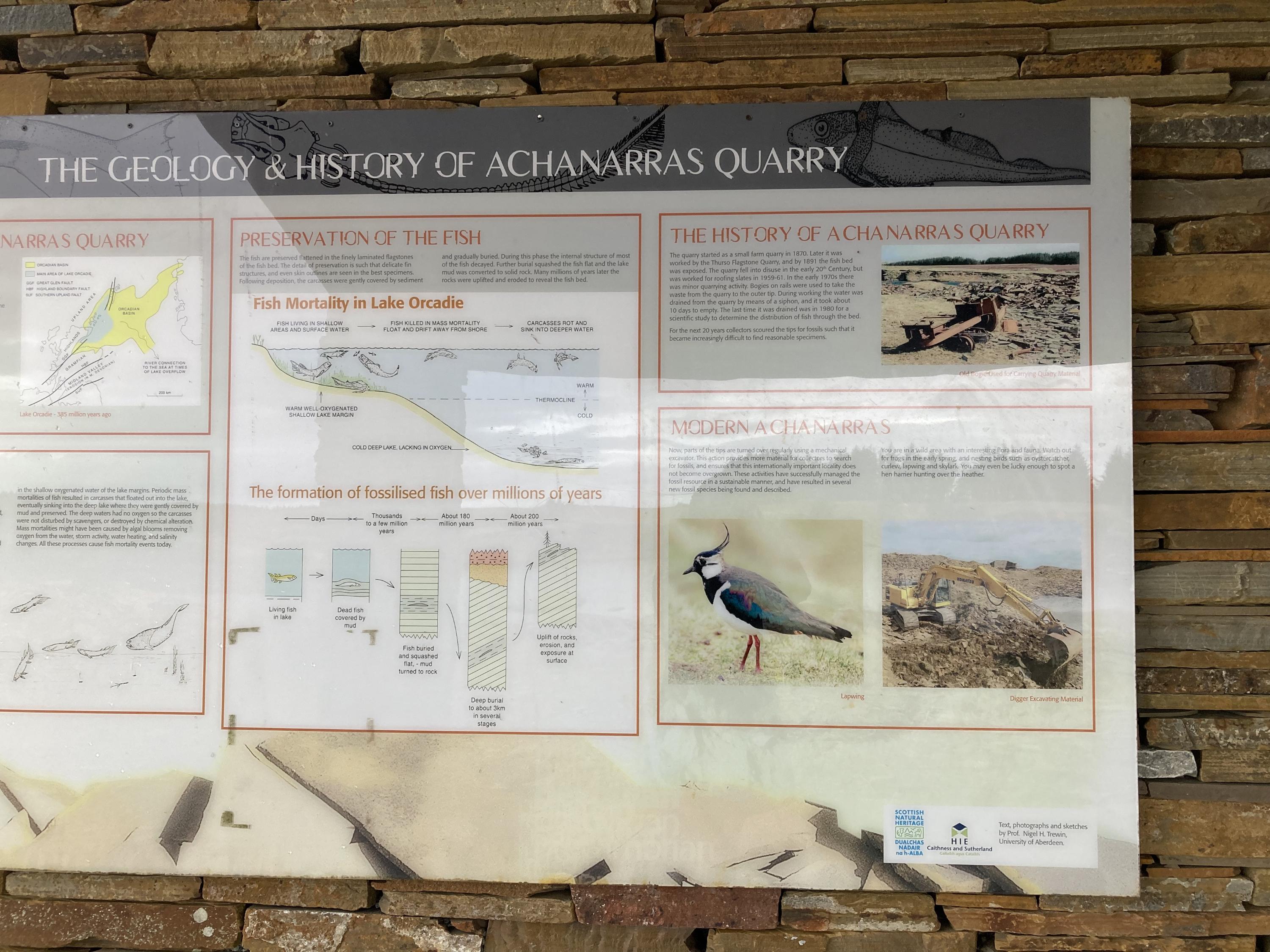
Information board at Achanarras Quarry.
THE HISTORY OF ACHANARRAS QUARRY
The quarry started as a small farm quarry in 1870. Later it was worked by the Thurso Flagstone Quarry, and by 1891 the fish bed was exposed. The quarry fell into disuse in the early 20* Century, but
was worked for roofing slates in 1959-61. In the early 1970s there was minor quarrying activity. Bogies on rails were used to take the waste from the quarry to the outer tip. During working the water was drained from the quarry by means of a siphon, and it took about
10 days to empty. The last time it was drained was in 1980 for a scientific study to determine the distribution of fish through the bed.
For the next 20 years collectors scoured the tips for fossils such that it became increasingly difficult to find reasonable specimens.
MODERN ACHANARRAS
Now, parts of the tips are turned over regularly using a mechanical
excavator. This action provides more material for collectors to search for fossils, and ensures that this internationally important locality does not become overgrown. These activities have successfully managed the fossil resource in a sustainable manner, and have resulted in several new fossil species being found.
You are in a wild area with an interesting flora and fauna. Watch out
for frogs in the early spring and nesting birds such as oystercatcher. curlew, lapwing and skylark. You may even be lucky enough to spot a hen harrier hunting over the heather.
Text, photographs and sketches by Prof. Nigel H. Trewin,
University of Aberdeen.
Rowan Barnes
Oct. 8, 2025
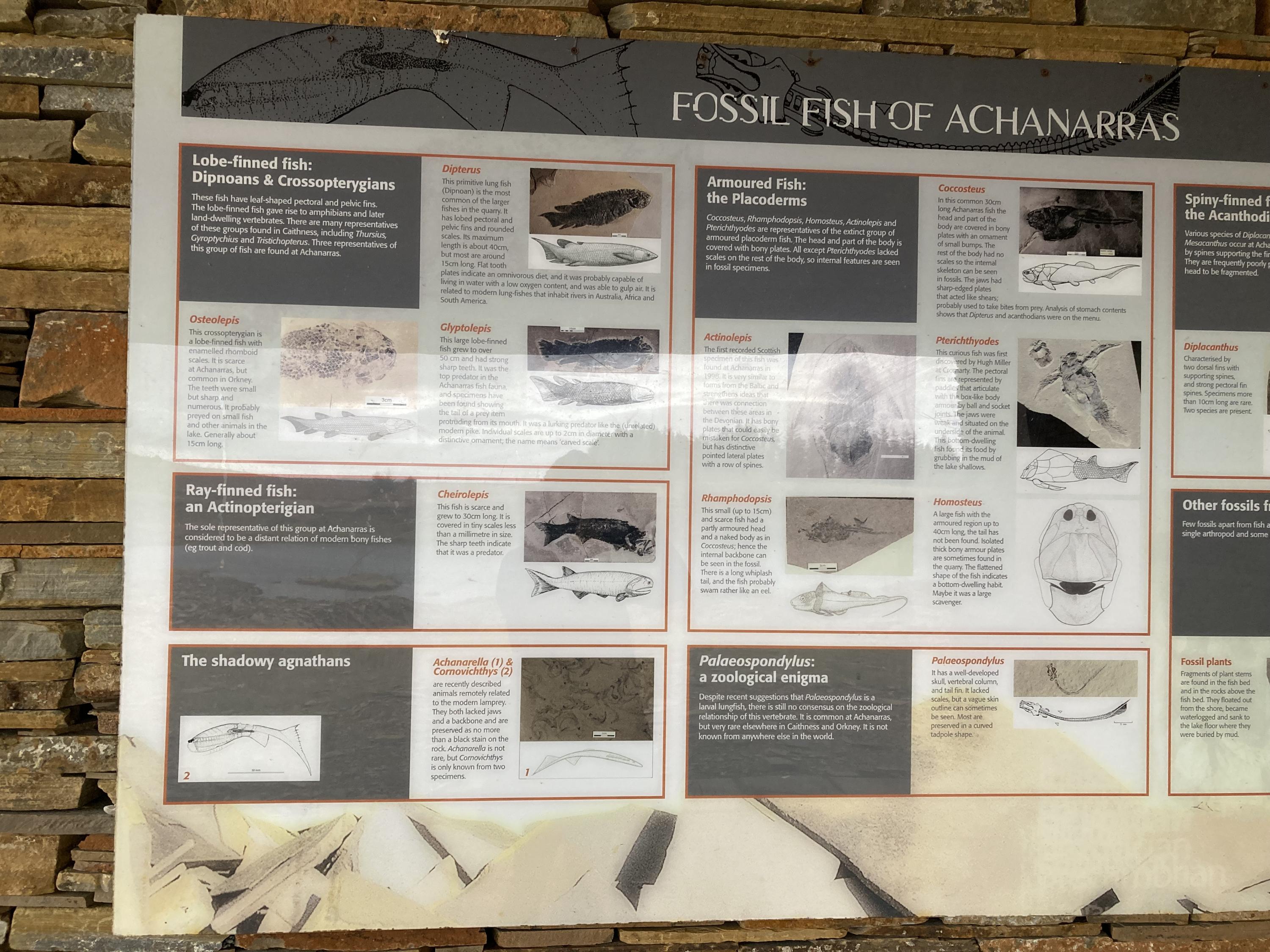
Information board: the fossil fish of Achanarras. Text, photographs and sketches by Prof. Nigel H. Trewin,
University of Aberdeen.
Rowan Barnes
Oct. 8, 2025

Information board: the fossil fish of Achanarras. Text, photographs and sketches by Prof. Nigel H. Trewin,
University of Aberdeen.
Rowan Barnes
Oct. 8, 2025
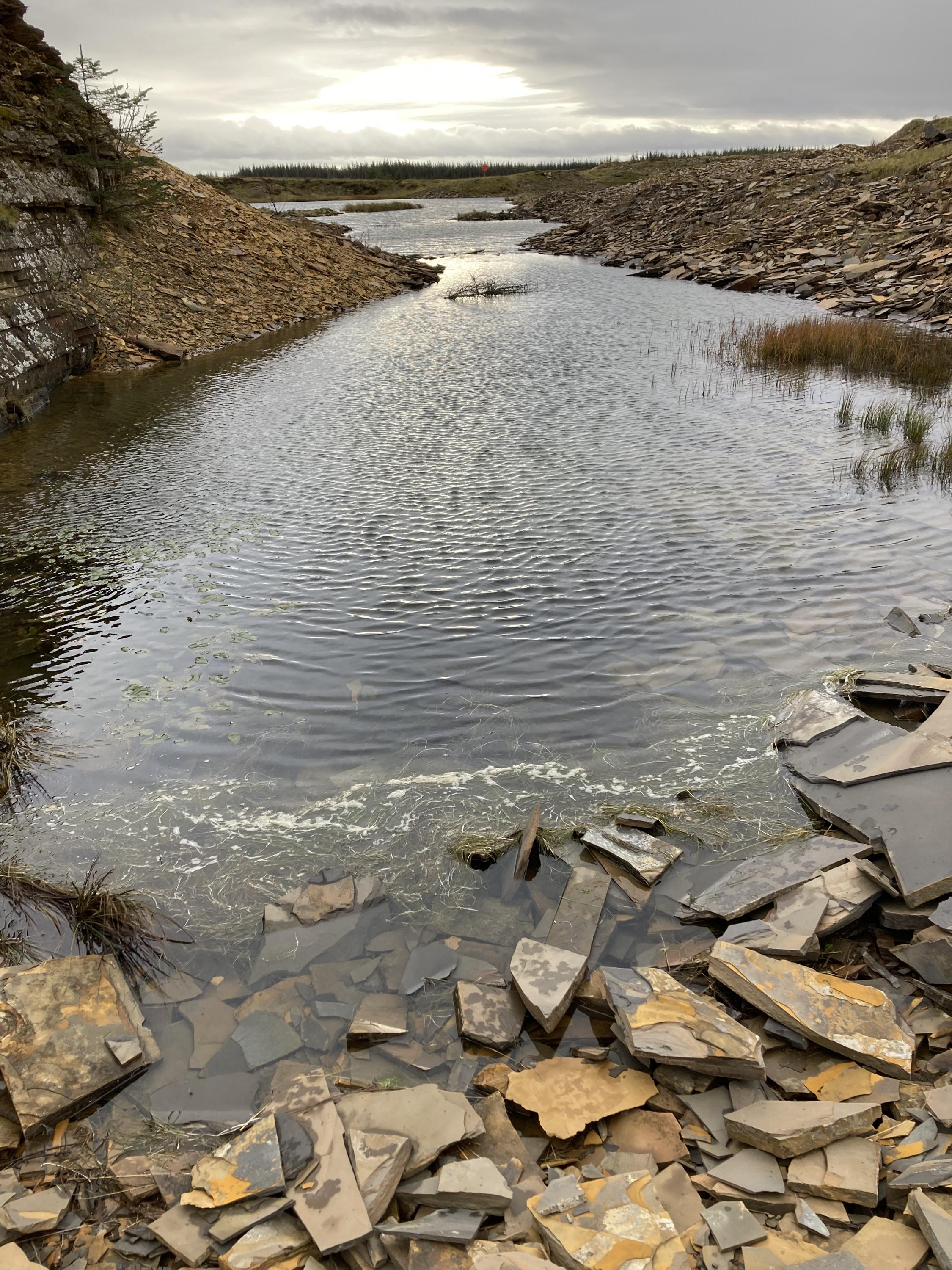
View across the waterfilled centre of the quarry.
Rowan Barnes
Oct. 8, 2025
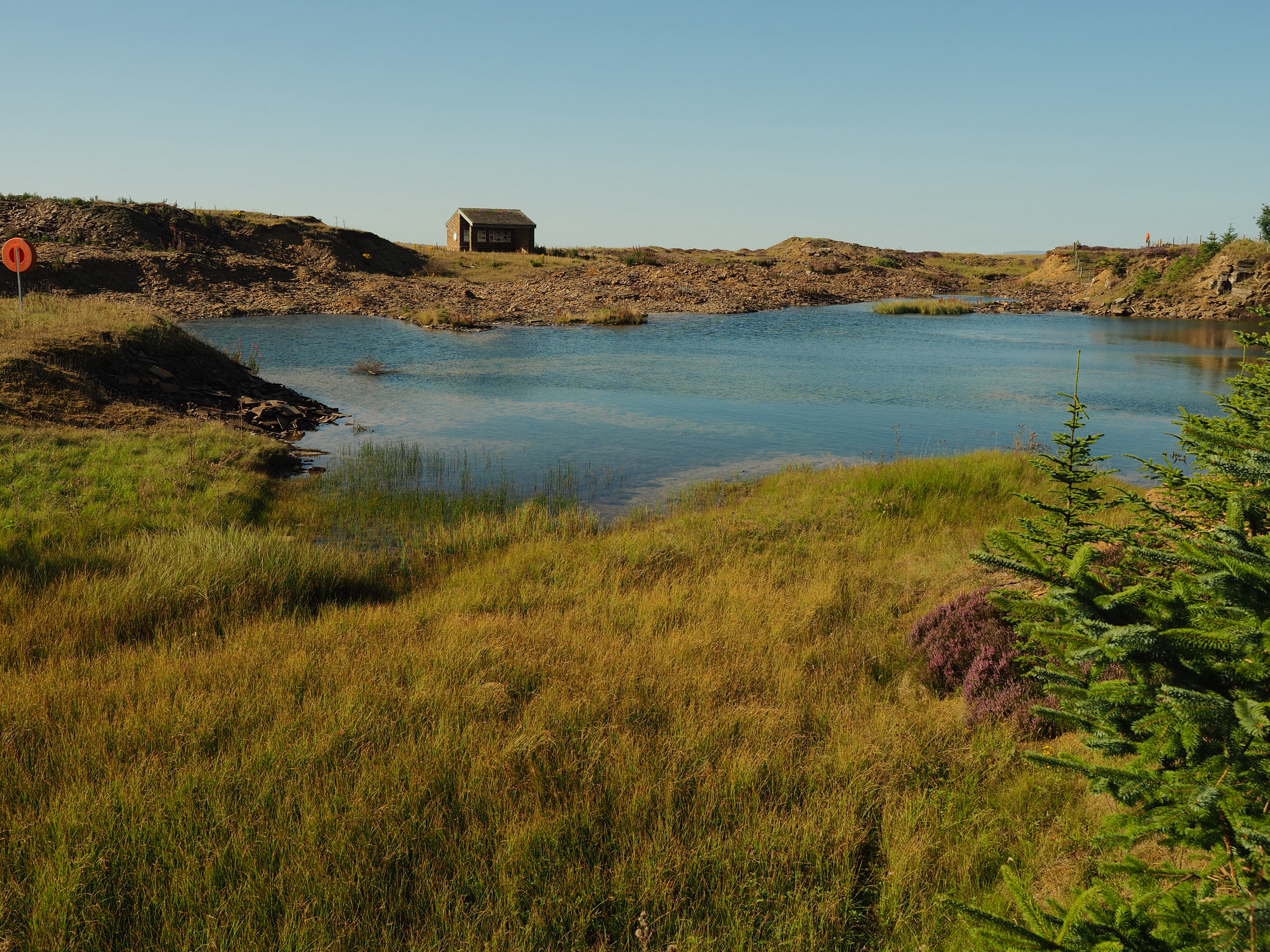
View looking North across the site showing the flooded quarry with shelter on the horizon. The spoil heaps are to the west of the water body.
Gary Eisenhauer
Aug. 9, 2023
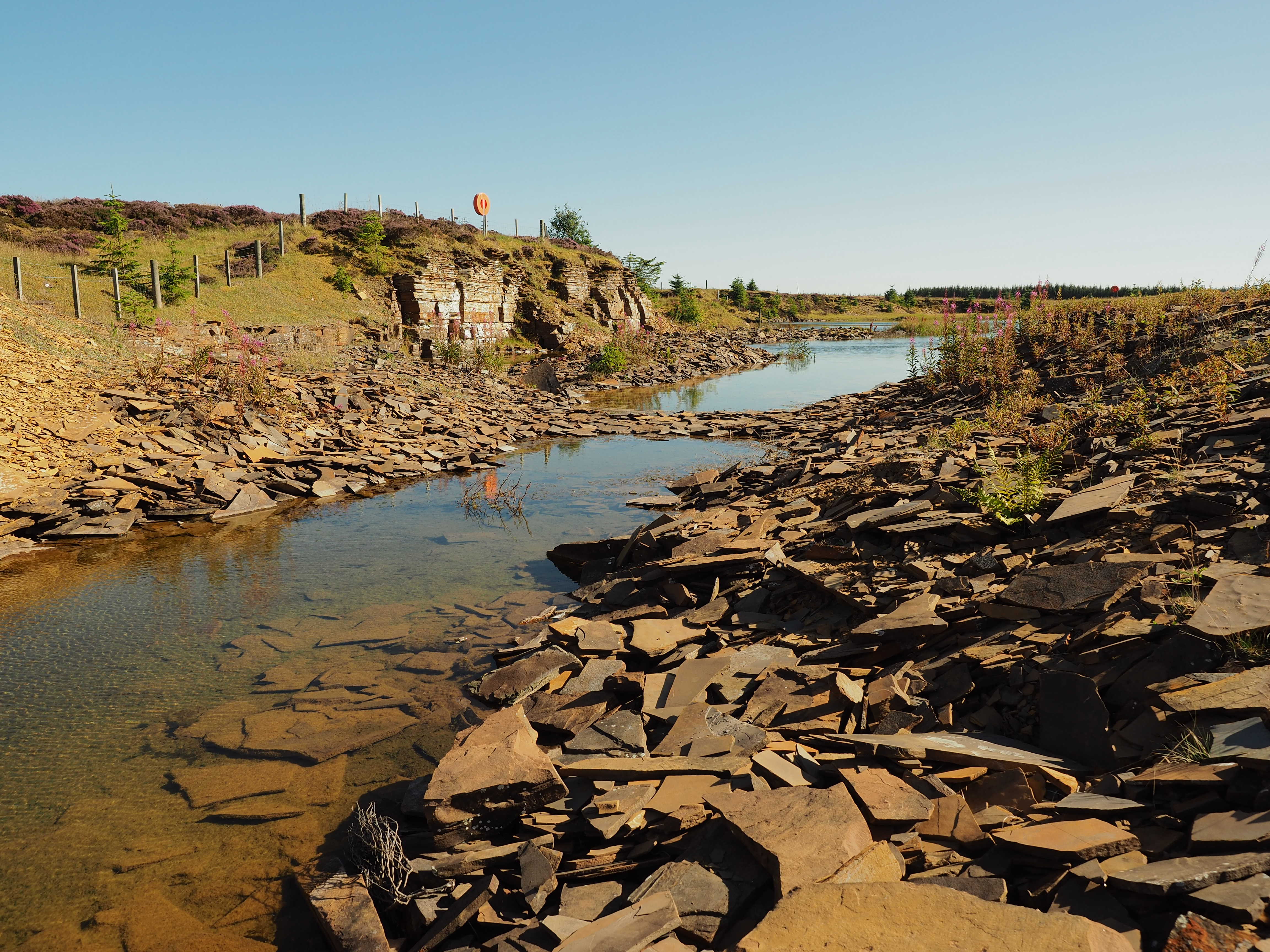
View looking South across the site. The remains of the quarry face visible to the east while the spoil heaps are to the west of the water body.
Gary Eisenhauer
Aug. 9, 2023
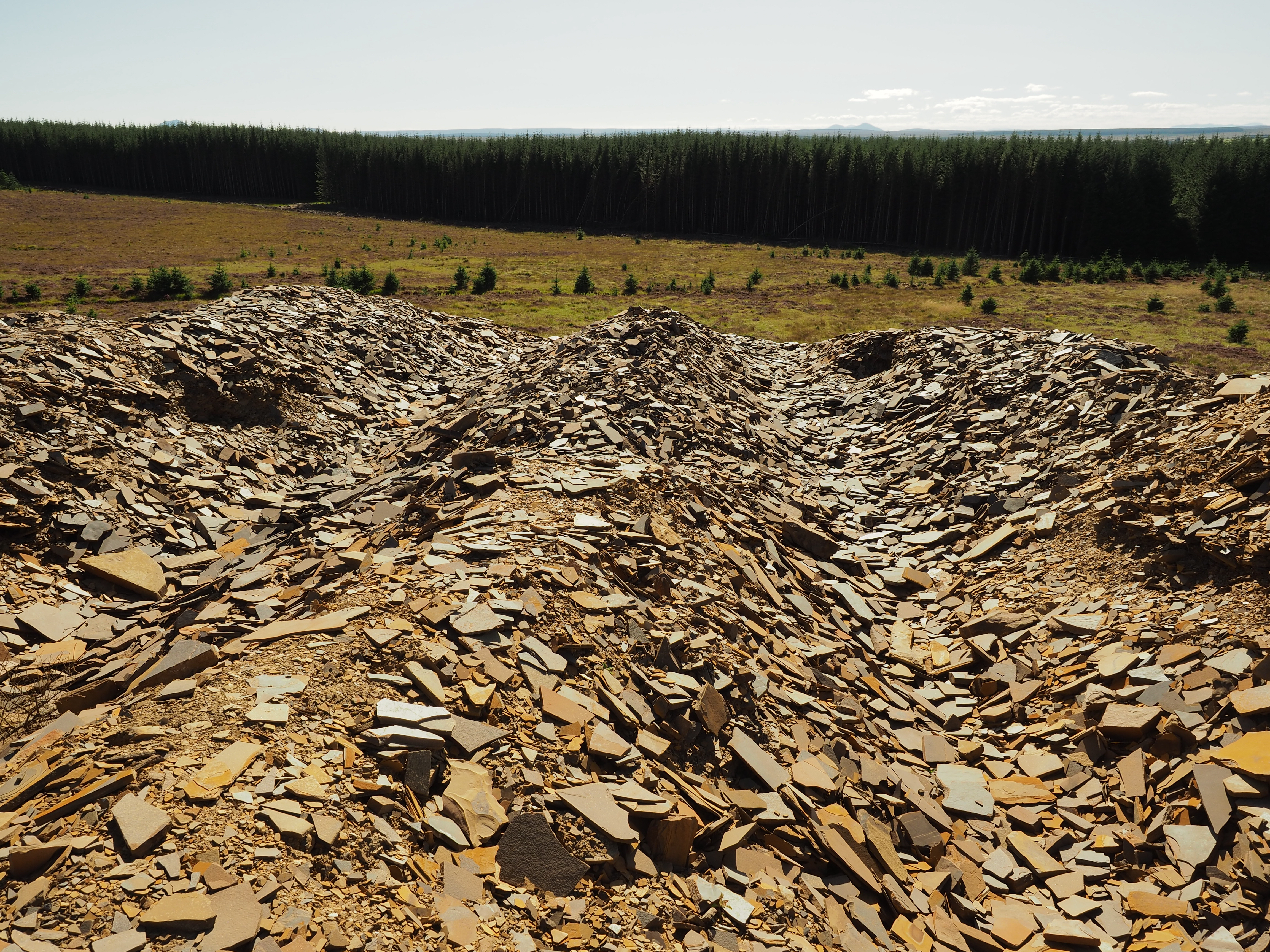
Typical view of the ridge and furrow nature of the spoil heaps looking West.
Gary Eisenhauer
Aug. 9, 2023
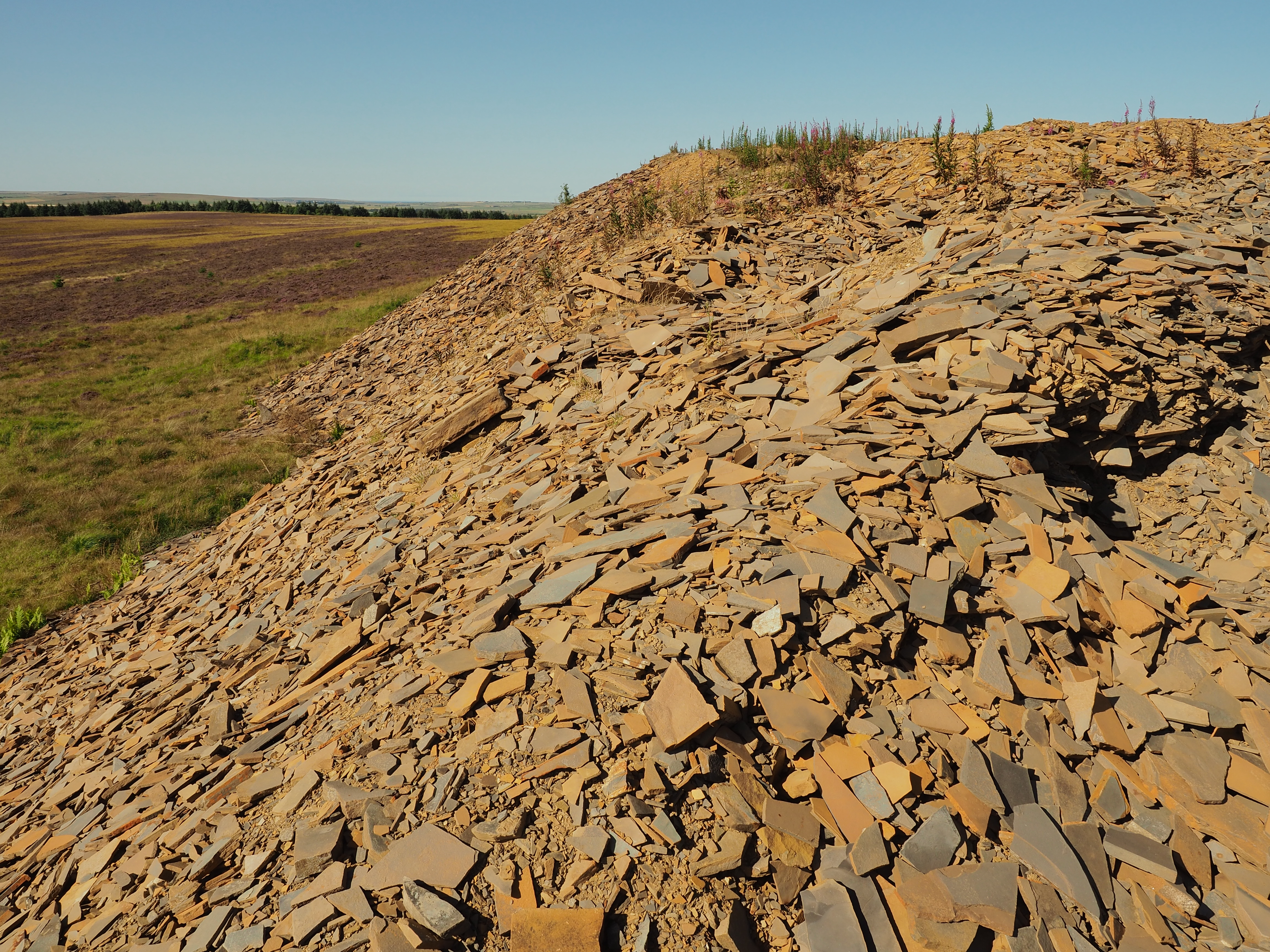
View looking North of the steep sided nature of the spoil heaps. Warning signs are present and care should be taken near the edges.
Gary Eisenhauer
Aug. 9, 2023

Looking back at the information hut.
Rowan Barnes
Oct. 8, 2025

Typical view of the ridge and furrow nature of the spoil heaps looking East.
Gary Eisenhauer
Aug. 9, 2023

View of what remains of the quarry face in the Northeastern part of the site.
Gary Eisenhauer
April 6, 2023

The quarry face in the north eastern part of the site.
Rowan Barnes
Oct. 8, 2025

View over spoil heaps looking South across the site.
Gary Eisenhauer
Jan. 15, 2022

Palaeospondylus gunni Traquair. Common at this its type locality, but rare elsewhere in the region. Scale bar shows 1mm intervals.
Gary Eisenhauer
Feb. 6, 2022

Sea bed fossils, which match. These rocks are 60 cm in length and were found separated, but sandwiched together. The ridges are pronounced and show the pattern of sands.
Rowan Barnes
Oct. 8, 2025